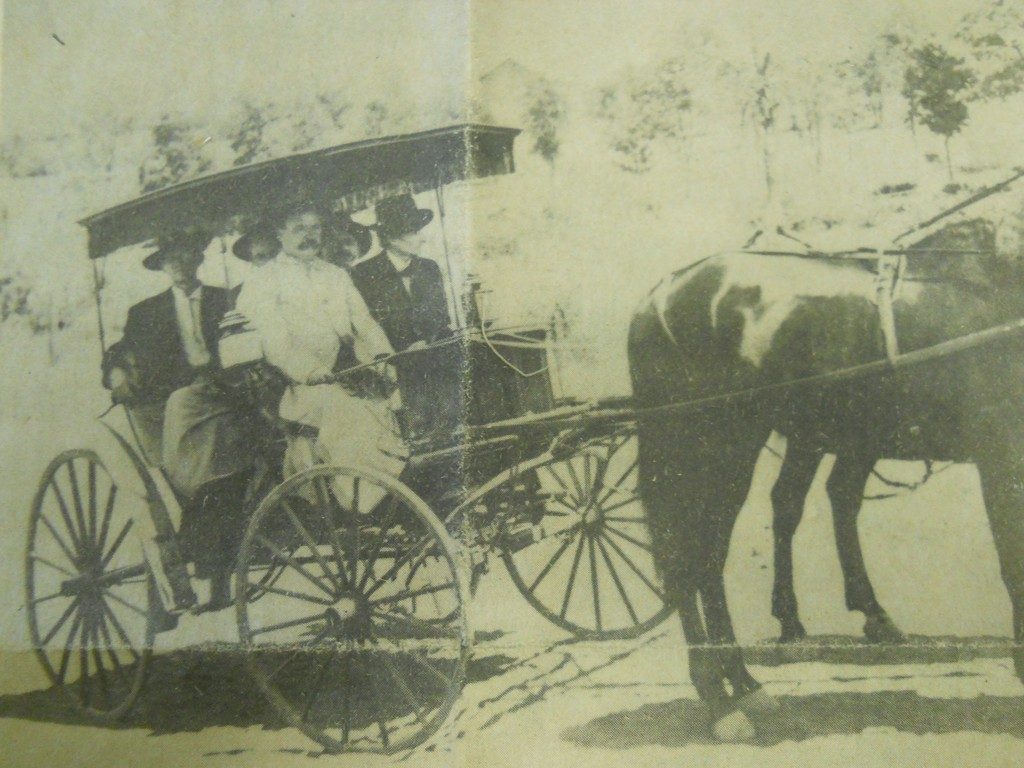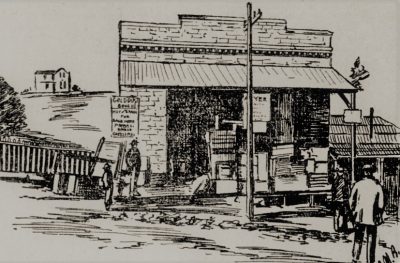More than century later, murder victim given a voice
Editor’s note: Follow the evidence in the unsolved murder case of Ah Yee and the possible link to one of California’s earliest mass murderers.
Longtime popular merchant Ah Yee was robbed and murdered in 1898. His killer was never caught but in 1904, investigators believed Adolph Weber, a young man accused of murdering his entire family, was also responsible for the earlier murder. Ah Yee’s slaying led the governor to offer a reward to help close the case.
Inside CDCR takes a closer look at the murder of Ah Yee, possibly another of Weber’s many victims. More than a century later, the victim is given a voice.
Immigrant businessman slain
By all accounts, Ah Yee was well-liked and respected. The immigrant business man made his way to Auburn in the late 1850s. As a merchant, he purchased gold dust from area miners. He also sold provisions for miners and residents.
On the evening of Dec. 2, 1898, he closed-up shop and went to bed. As usual, he slipped into his bed in his two-story business and fell asleep. In the basement, a few of his hired hands slept in their quarters.
The next morning, his body was found beside the ax used to sever his head from his neck. His back room, where it was believed he kept his money, was ransacked. Shock rippled through the small foothills town as news of the grisly murder spread.
Placer County law enforcement officials immediately began investigating. The community, mourning the loss of one of the town’s pioneers, embalmed his body so he could lie in state.
Murder shocks town’s residents
“One of the most horrible murders ever perpetrated in this section was the killing of Ah Yee. (He) had lived here 40 years, and was as well-known as any inhabitant in the county. He kept a general merchandise store, (buying) gold dust mined around Auburn. His wealth was estimated at $20,000 to $100,000,” reported the San Francisco Call, Dec. 4, 1898.
The murder was gruesome.
“Ah Yee’s head was completely severed from the body. A hatchet lay under him, and an ax by his side. Ah Yee slept in his store alone, his hired help occupying apartments in the cellar. It is supposed that the murderers went into the store at 11 or 12 o’clock under the pretense of buying something, and while being waited upon, struck their victim in the face several times with the hatchet,” the Call reported. “When he fell to the floor, they picked up a new ax and completely severed the head from the body.”
The murderer rummaged around to find the merchant’s stash of moolah.
“They then went into his private room, where he is supposed to have kept all his money, and made away with it. Some gold dust has been found, but as yet no money,” the paper reported.
Chinese gang members attempted to kill him years earlier, but police ruled them out as suspects.
“Sheriff Conroy and Coroner Mitchell are investigating the case. Some twenty years ago an attempt was made by (gang members) to take the (merchant’s) life, but the officers do not think this is a similar case. They believe that the killing was done for robbery alone,” the newspaper reported.
Store had tons of merchandise
After his death, the packed store needed to be cleared out. Those duties fell on the shoulders of Berry Mitchell, coroner and public administrator.
“Mitchell was a one-time miner, saloon-keeper and postmaster,” according to Auburn’s Joss House Museum. “Since much of the stock of Ah Yee’s store was perishable in nature, emptying the store and creating an inventory was a priority. By the time Mitchell and a hired crew had emptied out only half of the store’s contents, he estimated they had removed 22 tons of goods. The inventory included 80 chests of Chinese tea (along with other goods as well as) 12 jars of blackberry jelly, opium and yansee opium.”
(Editor’s note: At the time, opium and its derivatives were legal. As late as 1911, products containing opiates could be sold over the counter as long as they were properly labeled. When the Harrison Narcotic Act of 1914 was passed, it regulated many drugs and allowed law enforcement to prosecute doctors who prescribed opiates to drug addicts.)
Mitchell also tracked down Ah Yee’s wife, “Wong Shee, a resident of Ngow Low How Village, Hoy Ping District, Kwangtung Province, Chinese Empire,” and a son, “Chung Ah Fook in Mexico City,” the museum reports.
The only clue was a stranger seen in town the day prior to the murder. With little else to go on, a reward was offered for the suspect.
“Governor Budd has offered a reward of $500 for the arrest and conviction of Fong Lu, alias Quong Ching Fung, who (allegedly) murdered Ah Yee at Auburn,” reported the Sacramento Daily Union, Jan. 1, 1899.
That lead didn’t pan out for investigators and the case went cold.
Auburn murderer becomes prime suspect
Directly behind Ah Yee’s store was Brewery Lane, where Julius Weber ran his brewery. Sitting above the brewery, on a hill, sat the Weber residence – home to a then 16-year-old Adolph Weber.
In November 1904, nearly six years after Yee’s death, Adolph was charged with murdering his entire family.
According to court transcripts and reports, Weber’s activities became increasingly violent as he grew older. His physician claimed Adolph began torturing small animals as a child. His crimes finally escalated when he robbed a bank. Then, he killed his parents and two siblings.
That’s when investigators began to turn their attention to Adolph for the 1898 killing of Ah Yee.
“In a statement given out by District Attorney Robinson, it is charged that Adolph Weber is guilty not only of the murder of his father, mother, sister and brother but that he is also strongly suspected in the assassination of Ah Yee, the wealthy Chinese merchant who was killed here a couple of years ago. Ah Yee’s murderer, who robbed his victim (and) killed him, has never been found. The district attorney says that he has received information which leads him to think that young Weber may be the guilty man. If Mr. Robinson establishes the truth of the information he has secured, it will mean that Adolph Weber committed murder while he was still a student in the high school,” reported the Colusa Daily Sun, Nov. 30, 1904.
Prosecutor: Ah Yee evidence not as solid as Weber family killing
The prosecutor believed he had a case against Weber not only for his family’s murder, but also for Ah Yee. Unfortunately, the evidence wasn’t strong enough to charge Weber with the earlier crime.
“(In 1898) a Chinese (merchant) was found murdered just over the hill from the Weber place. The evident motive of the crime was robbery. No particular suspicion attached to any one at the time, but during the last few days some persons have revived the story and profess to think Weber may have killed the (merchant). As Weber was only about 16 years old at the time, the theory does not find many supporters in this community, although some think that if Weber murdered his own family he was capable of committing the (Ah Yee murder),” reported the San Francisco Call, Dec. 1, 1904.
Weber was hanged at Folsom State Prison in 1906, convicted of murdering his family. He was not charged with the merchant’s murder, technically leaving it unsolved.
By Don Chaddock, Inside CDCR editor
Office of Public and Employee Communications


Learn more about California prison history.
Follow CDCR on YouTube, Facebook, X (formerly Twitter). Listen to the CDCR Unlocked podcast.
